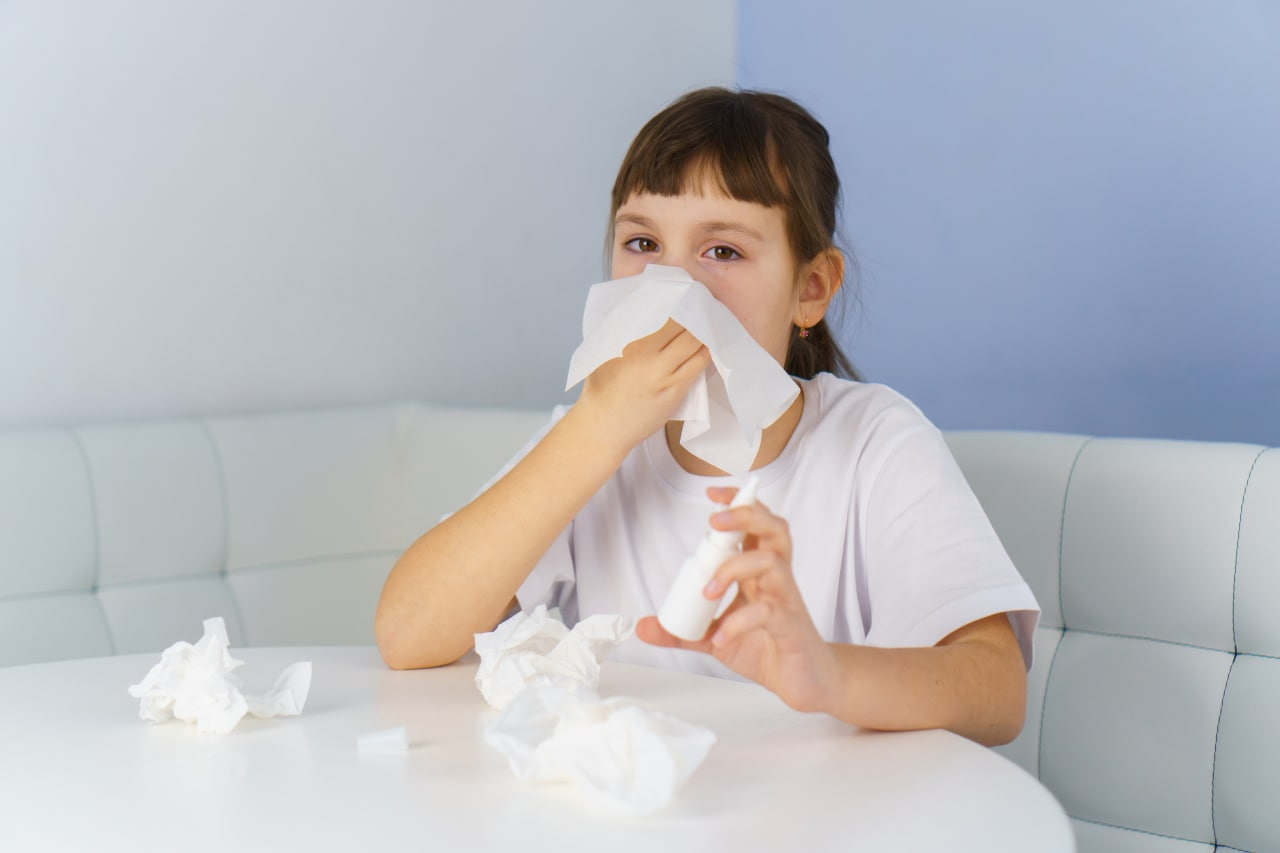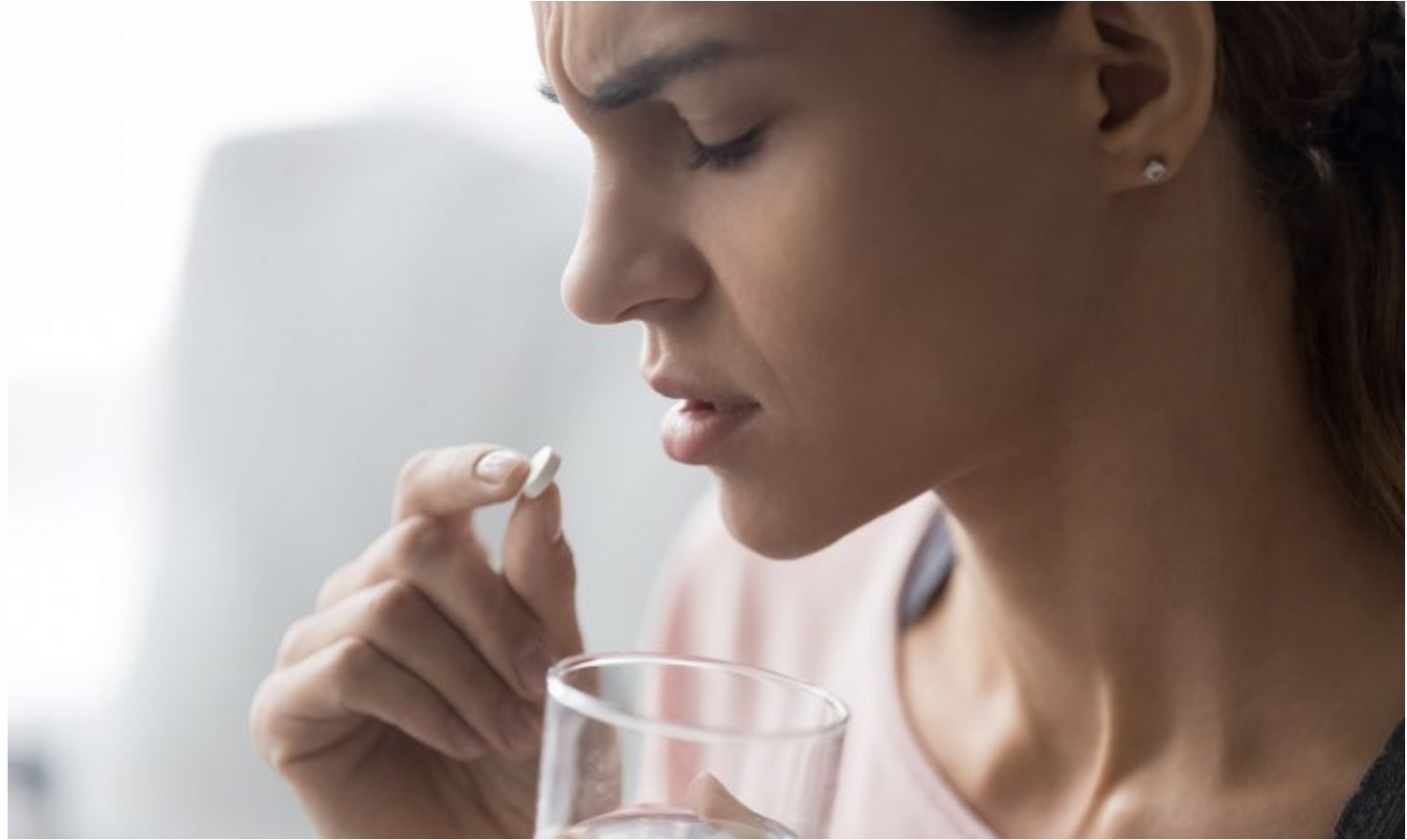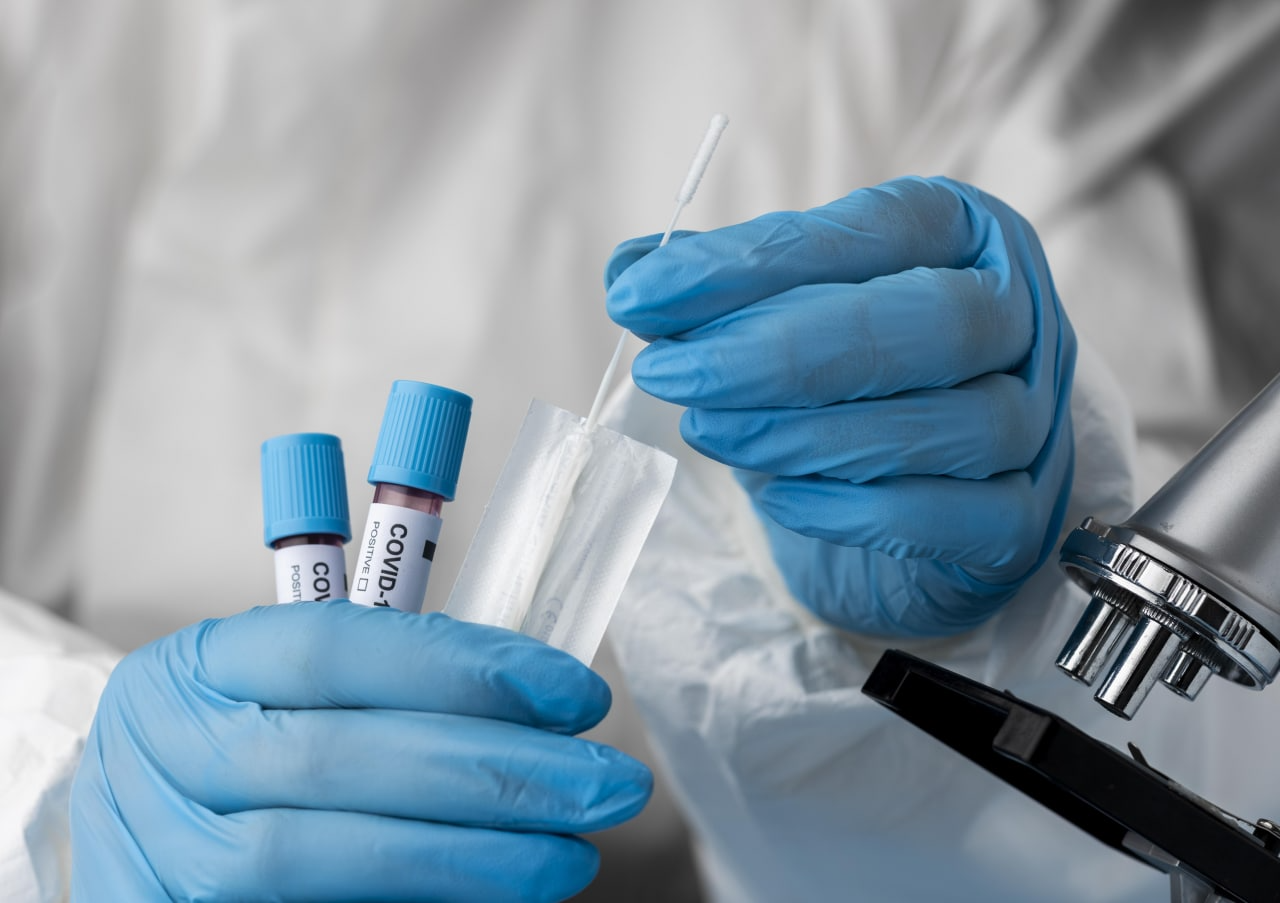Published by: Diana Luai Awad, Dr Pharmacist on Thursday 8.September.2022
The prevalence of allergic diseases in children is constantly increasing, and these pathologies are the leading cause of morbidity in pediatric practice1. When exposed to an allergen, the antigen binds specific immunoglobulin E (IgE) associated with the surface of mast cells and basophils, and leads to their degranulation with the release of histamine and other pro-inflammatory mediators. The released histamine binds to receptors on various cells of the surrounding tissues and vessels.
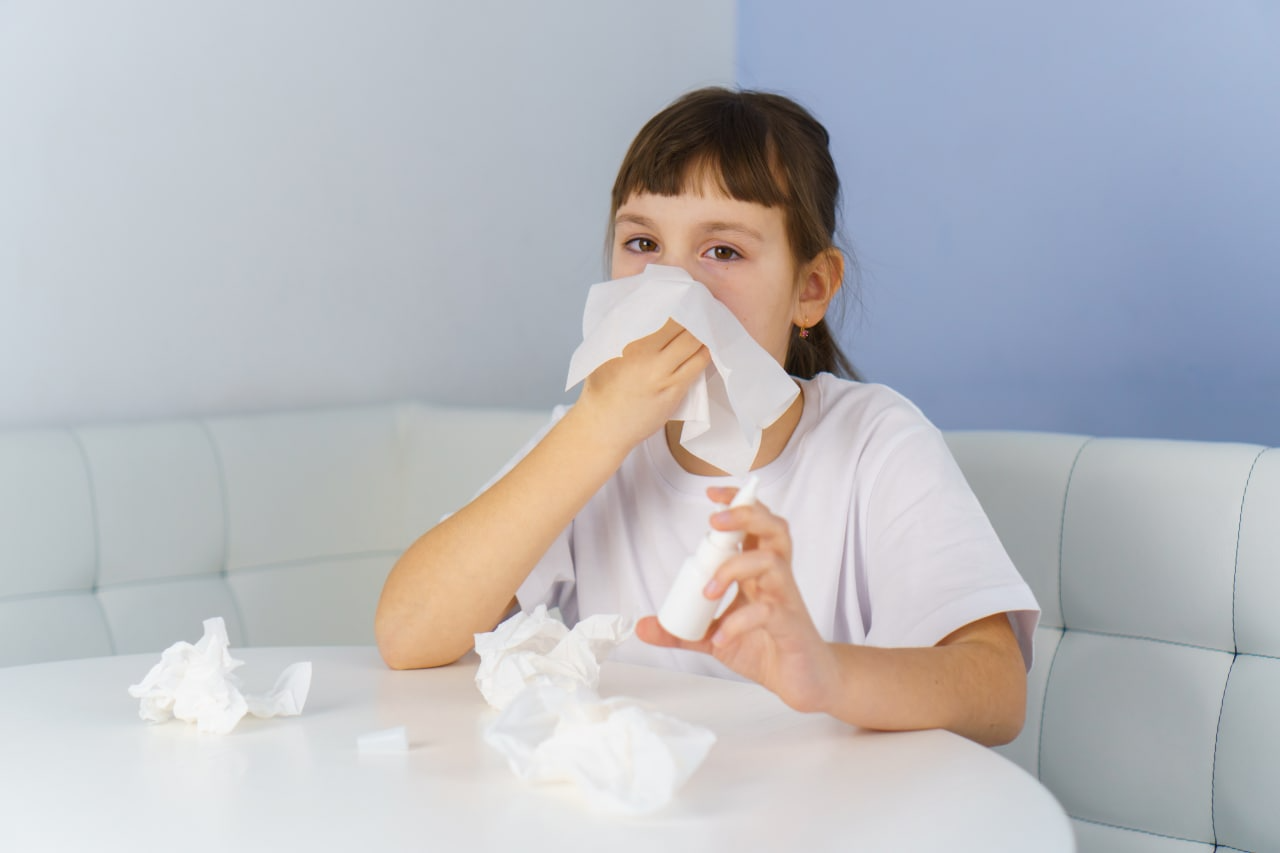
Histamine is the main mediator in the pathogenesis of allergic conditions in smooth muscles, mucous membranes and skin. Therefore, the use of antihistamines in this group of patients is very relevant.
H1-histamine receptor blockers: mechanism of action and application
H1-histamine receptor blockers are used to relieve histamine-mediated symptoms in various allergic conditions, including:
- non-anaphylactic allergic reactions
- atopic dermatitis
- allergic rhinitis and conjunctivitis
- chronic spontaneous urticarial
- anaphylaxis
- food allergies.
In addition, antihistamines are used to prevent asthma, in particular to prevent allergen-induced nonspecific airway hyperresponsiveness as well as intermittent and chronic cough.
Antihistamines are among the most commonly prescribed drugs for children2. Antihistamines reduce the release of proinflammatory mediators from mast cells and basophils, the chemotaxis and activation of inflammatory cells (especially eosinophils), and the expression of adhesion molecules induced by immunological and nonimmunological stimuli in epithelial cell lines. They inhibit the contraction of respiratory, vascular, gastrointestinal smooth muscles and reduce histamine-activated secretion of the salivary and lacrimal glands.
Classification of antihistamines in short
There are two generations of antihistamines
The first generation of antihistamines:
- have low selectivity for H1-receptors
- also block muscarinic, cholinergic, alpha-adrenergic receptors, serotonin receptors and ion channels3,4
- block the development of the early phase of allergic inflammation
- are characterized by a rapid onset of action
- are lipophilic and easily penetrate the blood-brain barrier affecting the central nervous system and causing a sedative effect
- when taking high doses, a paradoxical excitatory effect may develop.
Drowsiness with this group of drugs ranges from 40% with chlorpheniramine to 80% with hydroxyzine5. Other manifestations of the action on the central nervous system of first generation antihistamines are:
- impaired coordination
- dizziness
- lethargy
- decreased attention.
It has been shown that the use of drugs of this group in allergic rhinitis in children aggravates the decrease in learning ability associated usually with an allergic reaction6.
The second generation of antihistamines:
- penetrate the blood-brain barrier to a smaller extent
- have a longer therapeutic effect (up to 24 hours) compared to representatives of the first generation
- block the development of both the early and late phases of allergic inflammation
- have a minimally pronounced sedative effect
- act selectivity for peripheral H1-histamine receptors
- also have a rapid onset of action.
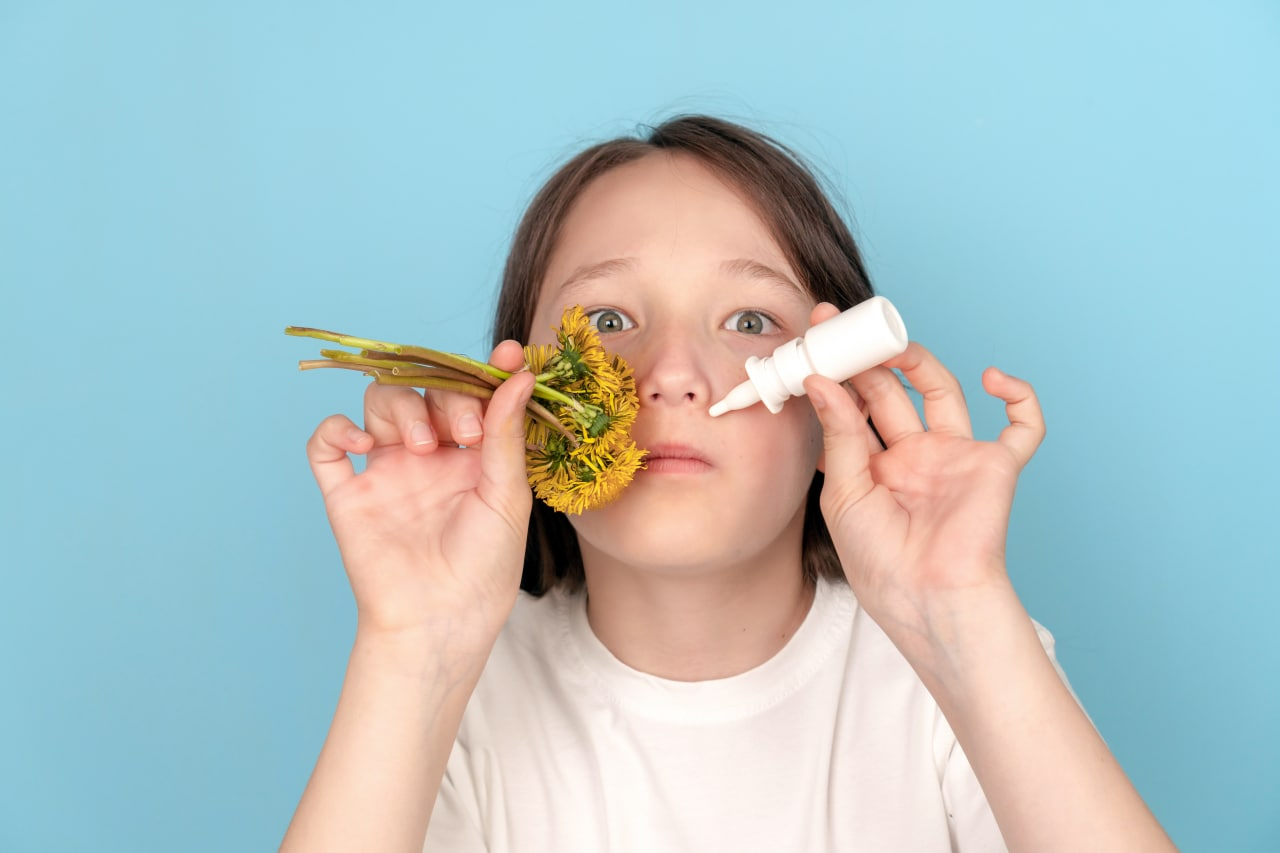
E.g.: Cetirizine has an onset of action comparable to chlorpheniramine, so it is advisable to use it for non-anaphylactic food reactions in children such as food allergies.
Only three antihistamines have been studied in long-term studies, and they are all second-generation drugs. These are cetirizine7, levocetirizine8 and loratadine9.
The most commonly used antihistamines in pediatric practice
|
First generation antihistamines* |
The most common side effect is central nervous system depression, the effects of which range from mild drowsiness to deep sleep. After a few days of therapy, the sedative effects decrease. Other side effects: headache, psychomotor disturbances, dry mouth, blurred vision, difficulty or retention of urination, constipation. |
||||
|
Indications |
Age |
Dose |
|||
|
Chlorphenamine |
Relief of allergy symptoms in hay fever, hives, food and drug allergies, relief of itching in chickenpox |
Liquid form 1-18 years Tablets 6-18 years old |
1 month-2 years 1 mg twice a day 2–6 years 1 mg every 4–6 hours 6–12 years 2 mg every 4–6 hours 12–18 years 4 mg every 4–6 hours |
||
|
Hydroxyzine |
Pruritus |
6 month-18 years |
6 months - 6 years 5-15 mg at night, if necessary, increase to 50 mg per day in 3-4 doses 6-12 years 15-25 mg at night, if necessary increase to 50-100 mg in 3-4 divided doses 12-18 years 25 mg at night, if necessary increase to 100 mg in 3-4 doses |
||
|
Promethazine hydrochloride |
Relief of allergy manifestations – allergic rhinitis, insomnia associated with urticaria and itching |
2-18 years |
2–5 years 5 mg twice daily or 5–15 mg at night 5-10 years 5-10 mg twice a day or 10-25 mg at night 10-18 years 10-20 mg 2-3 times a day or 25 mg at night, if necessary, increase the dose to 25 mg 2 times a day |
||
|
Second generation antihistamines* |
As a rule, second-generation drugs do not cause side effects in the form of drowsiness or antimuscarinic effects. |
||||
|
Cetirizine |
Allergic rhinitis, chronic idiopathic urticaria, atopic dermatitis |
1-18 years |
1-2 years 250 mcg/kg twice a day 2-6 years 2.5 mg twice a day 6-12 years 5 mg twice a day 12-18 years 10 mg once a day |
||
|
Loratadine |
Symptomatic treatment of allergies - allergic rhinitis, chronic idiopathic urticaria |
2-18 years |
2-12 years old Up to 30 kg 5 mg 1 time per day More than 30 kg 10 mg 1 time per day 12-18 years 10 mg once a day |
||
|
Fexofenadine |
-«- |
6-18 years |
6-12 years 30 mg twice a day 12-18 years 120-180 mg once a day |
||
|
Levocetirizine |
-«- |
Liquid form 2-18 years Tablets 6-18 years old |
2-6 years 1.25 mg twice a day 6-18 years 5 mg once a day |
||
|
Desloratadine |
-«- |
1-18 years |
1-6 years 1.25 mg once a day 6-12 years 2.5 mg once a day 12-18 years 5 mg once a day |
||
|
Olopatadin |
Seasonal allergic conjunctivitis |
3-18 years |
3-18 years 2 times a day, the maximum duration of treatment is 4 months |
||
|
Akrivastine |
Allergic rhinitis, chronic idiopathic urticaria |
12-18 years |
8 mg 3 times a day |
||
|
Azelastine |
Allergic conjunctivitis, seasonal allergic conjunctivitis Perennial conjunctivitisSeasonal and perennial AR Moderate to severe seasonal and perennial AR, if monotherapy with antihistamine or corticosteroid is inadequate applied topically, in the form of nasal sprays and eye drops |
4–18 years 5–18 years 12–18 years |
Child 4–18 years apply twice daily, increased if necessary to 4 times daily Child 12–18 years apply twice daily, increased if necessary to 4 times daily; max. duration of treatment 6 weeks 1 spray into each nostril twice daily Child 12–18 years 1 spray into each nostril twice daily |
||
*The table includes UK-registered prescription (POM) and over-the-counter drugs.
Bibliography
- Chad Z. Allergies in children //Paediatrics & child health.2001; 6 (8): 555-566.
- Asher MI, Montefort S, Bjorksten B, et al. Worldwide time trends in the prevalence of symptoms of asthma, allergic rhinoconjunctivitis, and eczema in childhood: ISAAC Phases One and Three repeat multicountry cross-sectional surveys. [Erratum appears in Lancet 2007;370(9593):1128] //Lancet 2006; 368: 733–743.
- Simons FE. Advances in H1-antihistamines. [Review] [120 refs] //N Engl J Med 2004; 351: 2203–17.
- Church MK, Church DS. Pharmacology of antihistamines //Indian J Dermatology 2013; 58: 219–24.
- Scadding G. Optimal management of nasal congestion caused by allergic rhinitis in children: safety and efficacy of medical treatments. Paediatr //Drugs. 2008; 10: 151-162.
- Simons F.E.R. Prospective, long-term safety evaluation of the H1-receptor antagonist cetirizine in very young children with atopic dermatitis. ETAC Study Group. Early Treatment of the Atopic //Child. J. Allergy Clin. Immunol. 1999; 104: 433-440.
- Simons F.E.R. Early Prevention of Asthma in Atopic Children (EPAAC) Study Group. //Pediatr. Allergy Immunol. 2007; 18: 535-542.
- Grimfeld A., Holgate S.T., Canonica G.W. et al. Prophylactic management of children at risk for recurrent upper respiratory infections: the Preventia I Study //Clin. Exp. Allergy. 2004; 34: 1665-1672.
Colleagues, haven't you joined our PharmaCourses of MENA region Telegram chats yet?
In the chats of more than 6,000 participants, you can always discuss breaking news and difficult situations in a pharmacy or clinic with your colleagues. Places in the chats are limited, hurry up to get there.
Telegram chat for pharmacists of MENA region: https://t.me/joinchat/V1F38sTkrGnz8qHe
Telegram chat fo physicians of MENA region: https://t.me/joinchat/v_RlWGJw7LBhNGY0

